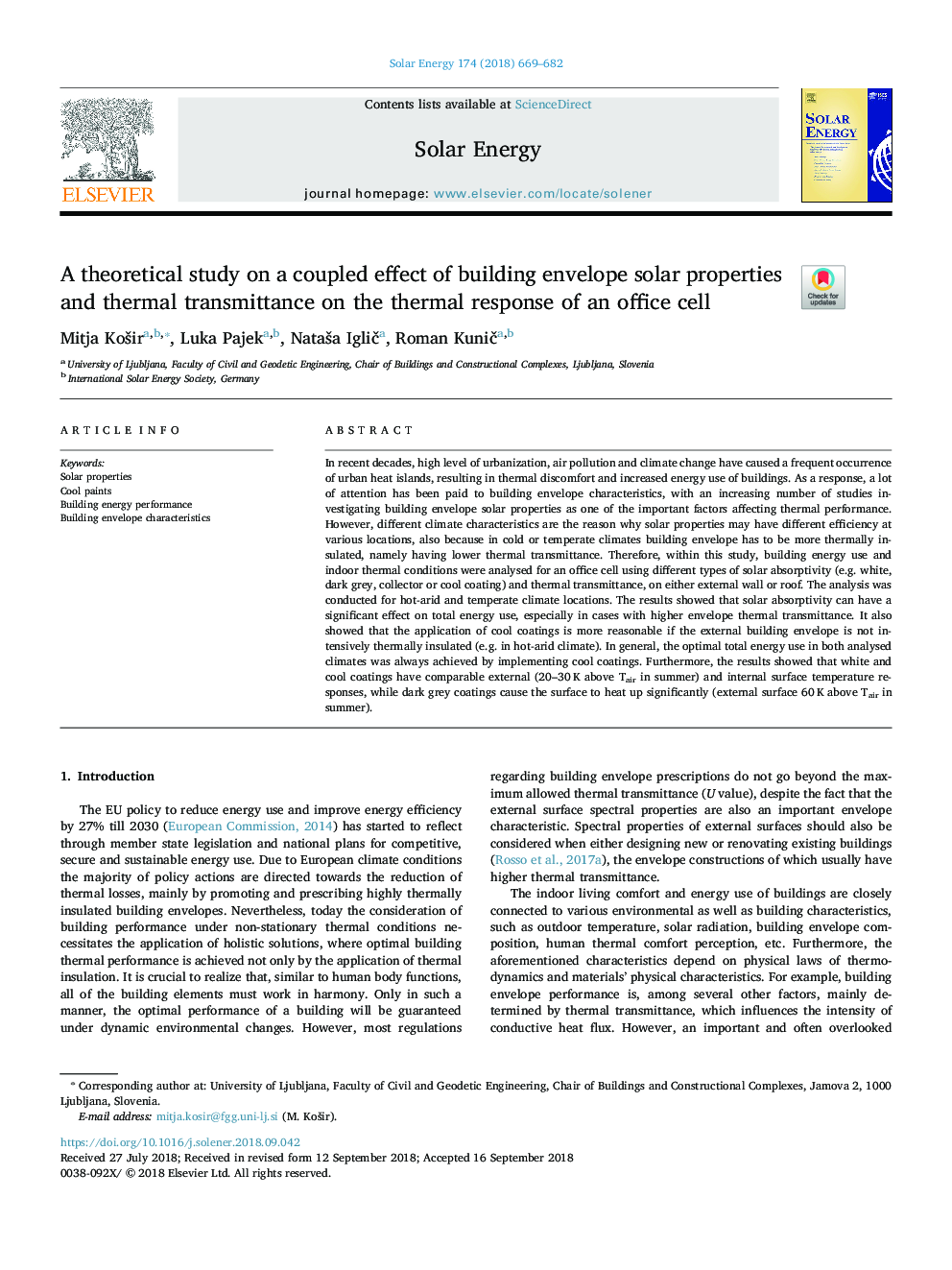| کد مقاله | کد نشریه | سال انتشار | مقاله انگلیسی | نسخه تمام متن |
|---|---|---|---|---|
| 11031059 | 1646086 | 2018 | 14 صفحه PDF | دانلود رایگان |
عنوان انگلیسی مقاله ISI
A theoretical study on a coupled effect of building envelope solar properties and thermal transmittance on the thermal response of an office cell
ترجمه فارسی عنوان
یک مطالعه تئوری در مورد اثر متقابل ساختمان خواص خورشیدی و انتقال حرارت در پاسخ گرمائی یک سلول اداری
دانلود مقاله + سفارش ترجمه
دانلود مقاله ISI انگلیسی
رایگان برای ایرانیان
کلمات کلیدی
خواص خورشیدی، رنگ های سرد عملکرد انرژی ساختمان، ویژگی های ساختمان پاکت،
موضوعات مرتبط
مهندسی و علوم پایه
مهندسی انرژی
انرژی های تجدید پذیر، توسعه پایدار و محیط زیست
چکیده انگلیسی
In recent decades, high level of urbanization, air pollution and climate change have caused a frequent occurrence of urban heat islands, resulting in thermal discomfort and increased energy use of buildings. As a response, a lot of attention has been paid to building envelope characteristics, with an increasing number of studies investigating building envelope solar properties as one of the important factors affecting thermal performance. However, different climate characteristics are the reason why solar properties may have different efficiency at various locations, also because in cold or temperate climates building envelope has to be more thermally insulated, namely having lower thermal transmittance. Therefore, within this study, building energy use and indoor thermal conditions were analysed for an office cell using different types of solar absorptivity (e.g. white, dark grey, collector or cool coating) and thermal transmittance, on either external wall or roof. The analysis was conducted for hot-arid and temperate climate locations. The results showed that solar absorptivity can have a significant effect on total energy use, especially in cases with higher envelope thermal transmittance. It also showed that the application of cool coatings is more reasonable if the external building envelope is not intensively thermally insulated (e.g. in hot-arid climate). In general, the optimal total energy use in both analysed climates was always achieved by implementing cool coatings. Furthermore, the results showed that white and cool coatings have comparable external (20-30â¯K above Tair in summer) and internal surface temperature responses, while dark grey coatings cause the surface to heat up significantly (external surface 60â¯K above Tair in summer).
ناشر
Database: Elsevier - ScienceDirect (ساینس دایرکت)
Journal: Solar Energy - Volume 174, 1 November 2018, Pages 669-682
Journal: Solar Energy - Volume 174, 1 November 2018, Pages 669-682
نویسندگان
Mitja KoÅ¡ir, Luka Pajek, NataÅ¡a IgliÄ, Roman KuniÄ,
